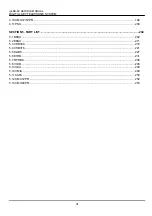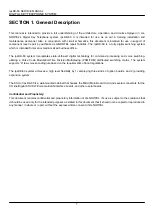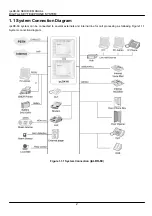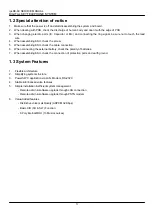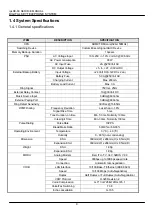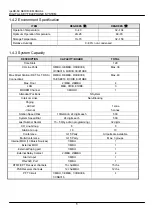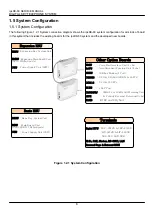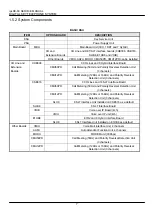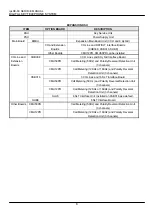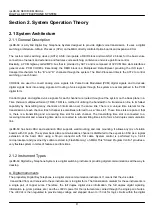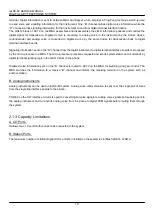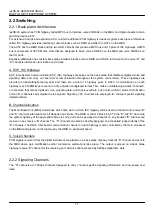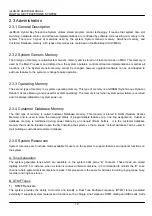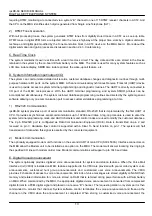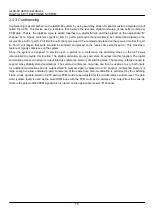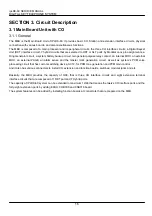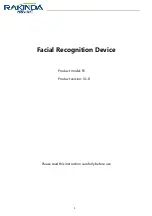
ipLDK-60 SERVICE MANUAL
DIGITAL KEY TELEPHONE SYSTEM
14
requesting station is assigned a transmit “B” channel and the VMIU is assigned a corresponding receive “B” channel.
The VMIU connects one of its 4 ports to the receive channel and starts monitoring for sound. If no sound is detected, the
recording is stopped and the connection is broken down. If sound is detected, the digitized PCM voice is converted into
compressed digitized audio and stored on NAND flash memory. The length of recorded announcements is monitored
and recording is stopped if the maximum announcement length for the message being recorded is exceeded.
2.4 Call Processing
2.4.1 Internal Call Types
A. Intercom
Intercom calls begin with a station going off-hook. The station or station board receives the off-hook data and
communicates to the MBU. In response, the MBU places digitized intercom dial tone on a “B” channel. The station or
station board in turn switches this “B” channel to the requesting station which converts the digital signal to analog audio
and the station hears the dial tone.
When you dial digits or press button on the phone, the same communication exchange from station or station board to
MBU and back take place. It informs the MBU of the request, such as dialing an intercom number. The MBU then
checks the scratch pad memory for status of the dialed phone and a connection is established by assigning transmitting
and receiving “B” channel pair for both stations. Or a call progress tone is sent to the initiating phone such as busy tone.
B. Paging
Paging is a programmable feature either enabled or disabled in customer database programming. When a station
places a page request, the MBU must check scratch pad memory at first to determine if the page zone is busy. Then the
customer database programming must be checked to determine if the station is allowed to initiate a page, and to
determine which stations are to receive the page. Stations that are not busy when the page was activated will be placed
in the off-hook mode and will monitor the receive “B” channel assigned to that station.
External pages are set up in the same way however, communication to an external page zone can be 2-way, meaning a
talkback speaker can be used for the external zone and the speaker can transmit voice back to the page initiator.
2.4.2 Outside Call Types
A. CO Calls
CO calls connect a station in the system to a central office port (telephone line) on the system. It provides access to the
Public Switched Telephone Network (PSTN). When an outside line is requested by a station, the CO line interface is
terminated providing CO dial tone from the local central office. A transmitting and receiving “B” channel pairs are used
on the system ISC highway to route the PCM digitized audio between the station and the CO line circuit.
When the station dials DTMF digits, the dialed digit data is communicated to the MBU which in turn injects PCM data of
the dialed digit DTMF tones onto the transmitting “B” channel through digital summation techniques. The CODEC
associated with the CO Line decodes the PCM data into the analog wave form which is placed on the CO circuit and
sent to the local central office to establish the call connection. After the call is established, the system monitors the CO
line for open loop disconnecting supervision. If the tip and ring loop is open during the programmed loop supervision
time, the system disconnects the call.

